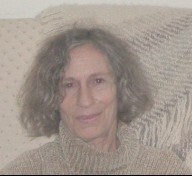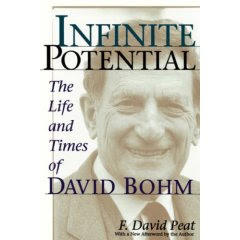The word "Emergence" has intrinsic appeal. It immediately leads beyond itself---to a space of potentiality. The world is wide open after that final "e"---or at least sort of. For the most part emergence is evoked after the fact. I hope to look a little more at the space beyond the final e, but first things first.
Emergence provides a way to account for the development of higher life forms and even spirituality without requiring a master plan or planner. Emergence oversimplified means that the whole is greater than the sum of its parts. A portion of its appeal is it provides an alternative to the reductive perspective, which holds that higher levels can be completely explained by lower levels. Thus biology can be completely explained by chemistry and chemistry in turn by physics. Emergence in contrast says that novel properties can appear at higher levels that are essential to complete understanding. It implies there is always something new under the sun---or rather the potential for something new is always there.
I work together on a science and spirituality blog with a Brandeis undergraduate that we call The Bridge: A Science and Spirituality Resource. I took on the task of summarizing an intriguing but challenging article by Terrence Deacon for the blog entitled “Emergence: The Hole at the Wheel's Hub.” At the end of my second time through the 40 page paper I had one of those experiences in which science and spirituality really converged for me. The moment of insight intensified during several subsequent readings. It marked a considerable deepening of my morning meditation and perhaps other aspects of my spiritual life as well.
The primary purpose of Deacon's article was not spiritual, but instead to impart some order to the promiscuous concept of emergence by characterized three different levels. However he brings all three together under the Eastern-seeming concept of absence, a potential shaped by what is not there. He quotes from the Tao Te Ching
Thirty spokes converged at the wheel’s hub to an empty space that makes it useful. Clay is shaped into a vessel, to take advantage of the emptiness it surrounds. Doors and windows are cut into walls of a room so that it can serve so some function. Though we must work with what is there, use comes from what is not there.
First something about the basic idea behind emergence. Thermodynamics tells us that the universe is running downhill and becoming increasingly random. In a state of randomness a change in one direction is balanced by change in the opposite; everything cancels everything else out. How then is life possible, to say nothing of the purposefulness on which we humans so pride ourselves? After all, we are---including our minds---part of nature.
The answer is that the way things fit together---relational properties---instead of a canceling each other out, may, depending on a confluence of events, build on each other. These relational or configural properties are responsible for the spontaneous production of order, such as the formation of whirlpools and also the origins of life. They explain why our organism can turn over most of the physical material it is made of and nonetheless persist.
Deacon’s three levels of emergence represent three critical transitions in the organization of matter. At the first level, higher order properties can emerge when separate elements become an aggregate. (These phenomena can be explained reductively, but including this level provides a complete sweep of the terrain.) For example, when H2O molecules aggregate, the properties of liquidity emerge. Becoming a liquid gives rise to characteristics such as surface tension and different kinds of flow that depend on the molecules’ relationship to each other. Not only H2O but many different kinds of molecules can become liquids. The characteristic behavior associated with liquidity, its “laws,” then become a higher level description of these systems.
 The second level transition describes the emergence or self-organization of form. Here first-order emergence becomes unstable. An example is a Benard cell. When a shallow pan of water or other liquid is heated evenly from the bottom, hexagonal convection cells emerge. All different kinds of convection patterns occur initially but they cancel each other out. Only the hexagonal cells survive because their close packing is most efficient at bringing the heat to the surface.
The second level transition describes the emergence or self-organization of form. Here first-order emergence becomes unstable. An example is a Benard cell. When a shallow pan of water or other liquid is heated evenly from the bottom, hexagonal convection cells emerge. All different kinds of convection patterns occur initially but they cancel each other out. Only the hexagonal cells survive because their close packing is most efficient at bringing the heat to the surface.The emergence of form occurs when random fluctuations at a lower level---here water molecules rising to the surface to remove the heat---give rise to relational regularity at higher levels that are beneficial to the system. These beneficial regularities in turn influence the lower levels to support this arrangement---the two work together so only hexagonal cells form. The kind of causality that occurs in these self-organizing systems is decidedly circular. As Deacon puts it, “interaction dynamics at lower levels becomes strongly affected by regularities emerging at higher levels of organization.”
Another example of a self-organizing system is the spontaneous generation of autocatalytic sets. Heterogeneous molecules form together into a cycle where, for example, A catalyzes the formation of B, B catalyzes the formation of C, and C of A. These cycles are very important in cellular metabolism. All that is needed to keep them going is the availability of raw materials and an energy flow through the system.
Check out this video which shows a very sexy autocatalytic cycle called a Belousov-Zhabotinsky Reaction.
With the third transition, some sort of informational memory is present, for example genetic material. This allows emergent forms to be reproduced over and over again. Think of it like a franchise with loose corporate control. Reproduction can then occur over time and even space. This memory is what makes development and evolution possible and by the same token gives a history to the system. The ability of self-organizing forms to reproduce---so their occurrence is no longer dependent on spontaneous self-organization---is arguably where life begins. These systems have a purpose of sorts---to reproduce and undergo change that enhances the possibility of not being canceled out.
These higher-level emergent systems are shaped by absence in several different ways. They are forged not by design, but by what is not canceled out. The forms that arise and then reproduce depend to a large extent on factors external to them, such as their fit with environmental conditions. Life and the mind to which it has given rise---in part because this passive selection goes on---is ever governed by the 'pull of yet unrealized possibility.'
Here is the passage close to the end that showed me how deeply this paper---which at that point I at best barely understood---had gotten to me.
Like something coming out of nothing, the subject of self is, in effect, a constitutive absence for the sake of which new constitutive absence is being incessantly evolved. In this sense, there is some legitimacy to the eliminativist claim that there is 'no thing' that it is. Indeed this must be so. The locus of self is, effectively, a negative mode of existence, that can act as an unmoved mover of sorts: a non-thing that nonetheless is the locus of a form of inertia---a resistance to change--- with respect to which other physical processes can be recruited and organized.
When I read that (the second time through) I had one of those powerful moments of knowing in which I could capture only a little of what was being known. As a student of intuition I suspect these are the best kind. I any case I am happy my unconscious was doing its job.
I felt myself to be a mere input/output tube. There was an intense focus of energy around my mouth, one of the ways into or indeed out of the devise. I enjoyed the minimalism and cleanliness of sensing myself as nothing more than this tube and the energy that served as its gate---of being largely without a self for an instant.
It was an experience of spiritual absence or emptiness, but not the kind of spiritual emptiness that verges on transcending the physical realm. Rather it was an emptiness that was pregnant with the most elementary aspects of human life---of feeding and of speaking, which lent it a hearty, almost animal-like vitality. It was also pregnant with everything I was not worrying about that would take care of itself. Finally it was pregnant with all that would flow through me and I might take in and perhaps transform. I felt very simple and very free. There was just potential space.















13 comments:
I like the article. An aspect of my masters thesis discussed intuition in the arts, and an artist's need for an intuition for intuition- or a metacognition / third-person awareness of their own intuitive potentials. This awareness must be an exploration of living process, rather than a predictable repetition of style or technique that is already quantified. It's nice to see this is common to the exploration of science as well- beyond what I gleaned from reading The Double Helix...
Autocatalytic video is awesome
Great subject matter here. One of the components of my day job is trying to formulate a "lamen" opening or response to an emerging philosophy named "Relational Systems." Quite often I can not directly grasp the themes, but there is a "knowing" of the principles i can not directly express except in allegory of image and personal experience.
thevasteque
rbed
Removed comments that appear to be spam. Had to guess about some that were not in English?
I like the article. An aspect of my masters thesis discussed intuition in the arts, and an artist's need for an intuition for intuition- or a metacognition / third-person awareness of their own intuitive potentials. This awareness must be an exploration of living process, rather than a predictable repetition of style or technique that is already quantified. It's nice to see this is common to the exploration of science as well- beyond what I gleaned from reading The Double Helix...
buy handbags
handbags
Designer Handbags Imitations
fake name brand handbags
knock designer handbags
Post a Comment